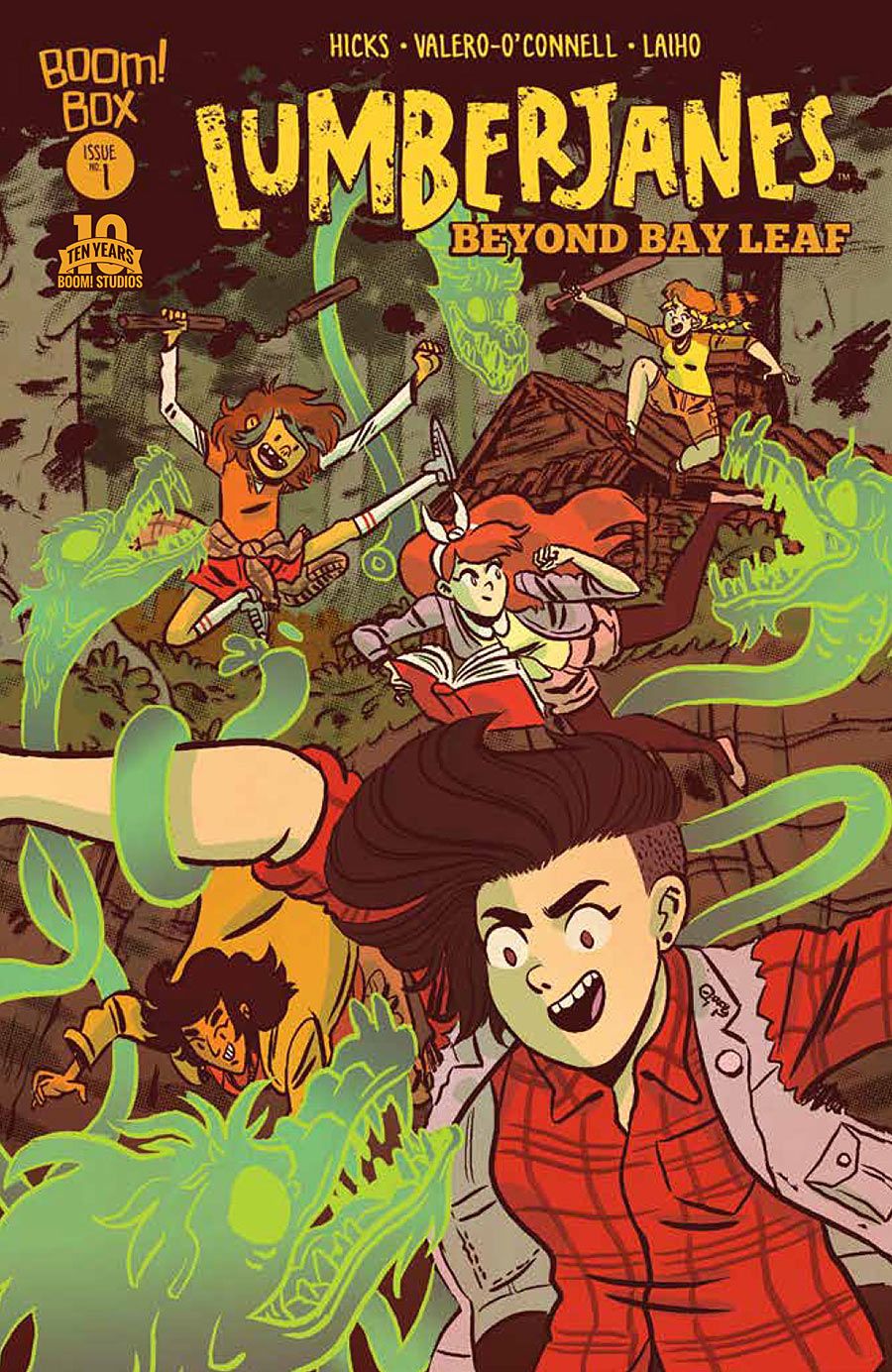In "Lumberjanes: Beyond Bay Leaf" #1, Faith Erin Hicks and Rosemary Valero-O'Connell join the Lumberteam. Hicks, a 2014 Eisner winner for "The Adventures of Superhero Girl," is a natural choice, and the story she writes deviates from and goes beyond usual episodic "Go team!" plot template for ensemble casts. The story begins unexceptionally. As usual, Jen -- the earnest and responsible scout leader -- has a parental role in the story and provides a reason for the other characters to be out at night. It's no surprise when her wholesome educational plan is derailed. Ripley's outsized enthusiasm, energy and impetuosity make her a natural star, and -- as soon as she spots the "ghost pony" -- she breaks free of the pack and becomes the story's main character. Jen, Jo, April, Molly and Mal are supporting characters in the action, taking a back seat to Ripley and the theme of selfishness vs. trust within friendship.
Valero-O'Connell's artwork has less visual differentiation between the characters than Brooke Allen's character designs in the original "Lumberjanes" series. The characters look more like each other, especially their eyes and the uniformly rounded, jutting chins. However, they still retain enough other distinguishing features to keep them distinct from each other from page to page.
The story seems to go by quickly, with lots of panel space dedicated to reaction shots, but the generous use of page space serves Valero-O'Connell's strong pacing and facial expressions well. For example, the three slim panels dedicated to Ripley's naming of the ghost pony create an expertly timed beat that is actually funnier than the punchline it sets up. Valero-O'Connell's details for these panels are a delight; Ripley's shifting and squeezing of Mr. Sparkles adds additional physical humor.
The issue has a relaxed, natural feeling throughout, even when the plot takes sudden twists into the supernatural. The warmth of the story comes from the friendship between the main characters. Hicks' casual dialogue has realistically casual diction and rhythms, and Valero-O'Connell's body language and facial expressions do even more to convey mutual affection. When Ripley has her confrontation with the villainess of the story, the stakes feel real.
Sola's introduction has some funny lines, and Hicks reveals her villainy in a low-key but startling way by having Valero-O'Connell zero in on her sharp teeth and evil smile. Sola feels like a stock villainess, just another witch who is looking for immortality and taking what isn't hers, but her exit scene has a surprisingly eloquent flowering of pathos.
The change in Sola when she fails is startling, and her sudden aging and sadness, coupled with that last knowing smirk, is riveting. Valero-O'Connell's panel composition and pacing in this resolution scene are exquisite. Maarta Laiho's coloring makes the most of this scene, too, keeping Sola's face in light shadows while the Lumberjanes are bathed in light. The contrast reinforces the moral differences between them and also heightens the horror and melancholy of Sola's last words.
Sola's offer to Ripley is a classic Faustian bargain, but with a twist. Instead of personal beauty, power or youth, Ripley's offered a Peter Pan deal to keep this summer of friendship preserved in amber, so that it will never fade or end. It's a brilliant variation, since it's even more sympathetic and relatable a lure than the standard, more obviously selfish temptations. Most of us have suffered from friendships changing or ending and mourned those losses. Ripley's decision isn't a surprise, but it doesn't need to be. The emotions ring true -- the reader fully believes Sola has guessed Ripley's heart's desire, and that knowledge makes the Ripley's decision and her retort to Sola especially powerful. Hicks wisely leaves the final scene to speak for itself and refrains from overt moralizing.
For its 32 pages, "Lumberjanes: Beyond Bay Leaf" #1 is a fast read, but its emotional depth makes it memorable.

